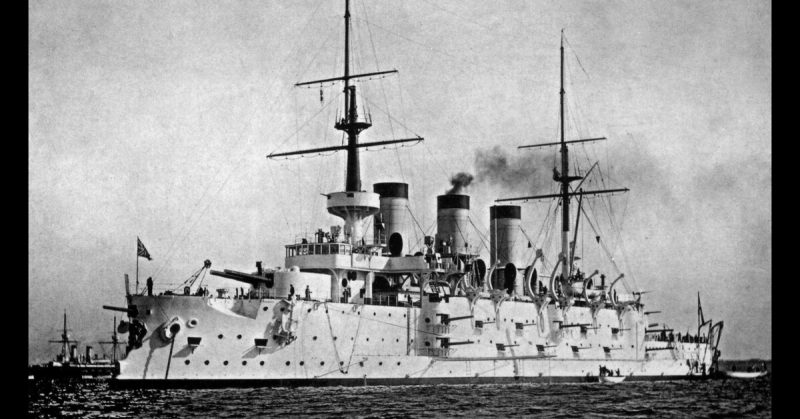When Britain declared war on Germany on August 4, 1914, a global war erupted. Both nations had colonial possessions around the world. Those small colonies, trading posts, and naval bases became the front line. Shortly after the outbreak of the war, a two-month long battle centered on one city: Tsingtao.
Tsingtao, or Qingdao, is a city in northeastern China, across the Yellow Sea from the Korean Peninsula. In 1891 the German Empire took control of the small fishing village and began a massive construction campaign. They transformed it into a modern port city, with railway lines and a well-fortified harbor. Around it, they constructed strong fortifications with numerous gun emplacements and a naval station.
The prosperous port served as a base of operations for the German and Austro-Hungarian Navies. For that reason, above all else, it was immediately targeted by the Japanese and British forces in the region. Japan and Britain had an alliance dating back to 1902, and in 1914 the British requested Japanese support in the war against Germany.
On August 15, Japan issued an ultimatum to Germany: remove your ships from Chinese waters and give Tsingtao over to Japan. Germany did not respond. On the 23rd the offer ran out, and Japan and Germany were at war.
The battle began with a naval blockade on the 27th. The Japanese sent five battleships, two battlecruisers, and two destroyers to surround the port. They stayed just outside the range of the heavy naval batteries overlooking the harbor. In addition to their warships, the Japanese had one seaplane tender; the Wakamiya. Preparations began for a long siege.
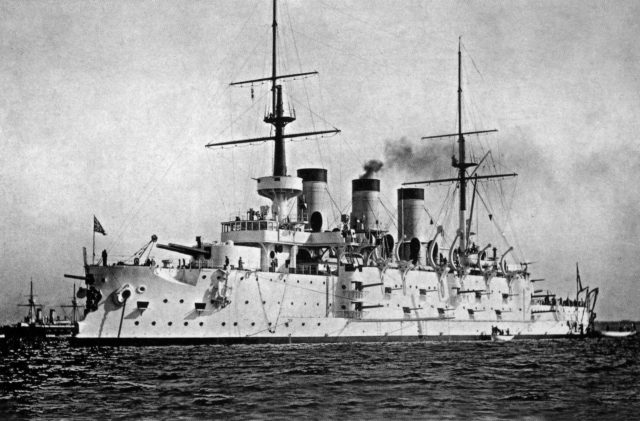
On September 2, the Japanese landed troops at Lungkou, 100 miles north of Tsingtao. It technically broke Chinese neutrality, but the Chinese protests were ignored. The British, not wanting the Japanese to claim a victory by themselves, added 1000 troops of the South Wales Borderers, and 500 Sikhs. The German army sent all their forces in the far east to defend Tsingtao. The Kaiser declared it a top priority. The Japanese then sent aircraft to scout the city’s defenses.
On September 5, a Farman seaplane dropped bombs on some of the German ships in the bay but was forced to retreat due to machine gun fire. That brief encounter was the first air/sea battle in history.
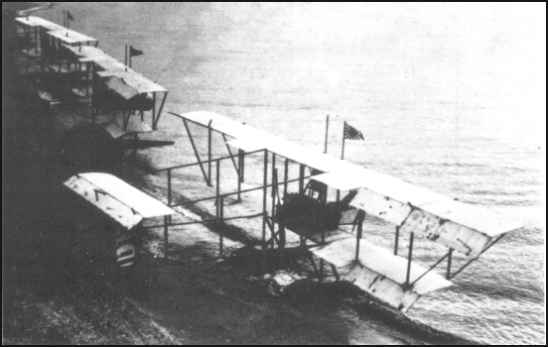
The German ships sent out a few sorties, sinking the Takashio, with the loss of 271 members of the crew. When it was determined they could not escape the blockade, the Germans removed most of the guns from their ships, adding them to their shore batteries. They were digging in for a bloody battle.
German troops skirmished with the Japanese north of the peninsula but were slowly pushed back. Alfred Meyer-Waldeck, German commander of the forces at Tsingtao, did not want to waste his limited infantry in a needless fight. His troops fought a slow retreat but had to relinquish railway stations as they went; enabling the Japanese to bring in more troops. After landing at Laoshan Bay, the Japanese infantry outnumbered the Germans more than 6 to 1.
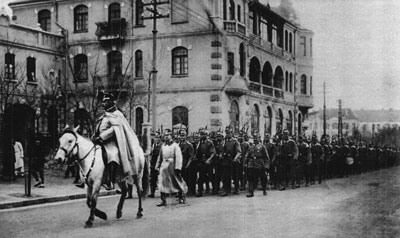
For the next two months, the Japanese probed the city’s defenses, brought in siege equipment, and harassed the naval batteries. Finally, on October 31, the Japanese batteries opened up. 100 guns sent shells into the German defenses in an endless barrage.
That same night, the Japanese fired shrapnel shells into the destroyed batteries of the German outer defenses. Under cover of the bombardment and the darkness, Japanese engineers dug a 300-meter sap trench, towards the German line. During the day the Germans responded with their own barrage, directed by observers on a high hill outside the city.
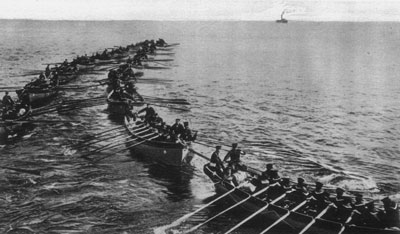
The next day the Japanese opened up with a massive bombardment. It was accompanied by Japanese cruisers pushing into the harbor, continually shelling the German sea batteries. The Austro-Hungarian cruiser SMS Kaiserin Elisabeth was scuttled in the harbor and her crew transferred to the defenses.
The Germans knew the Japanese had a knack for reusing enemy equipment. Some of the Japanese ships had been captured from the Russians a decade earlier.
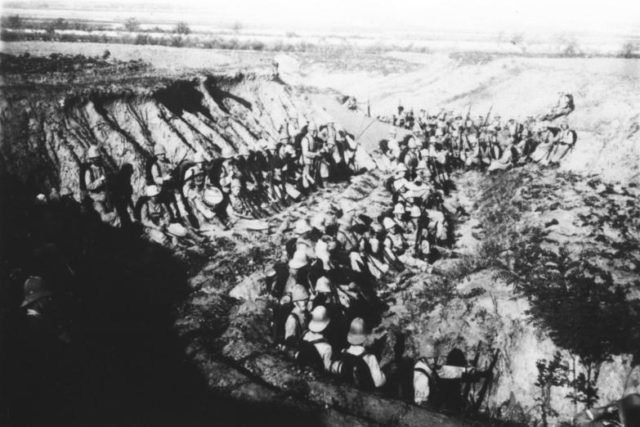
The shelling continued for seven days as the Japanese advanced. By November 5, the opposing trenches were around 100 meters apart in some areas.
By November 6 the German artillery was out of ammunition. That night, the Japanese attacked the German defenses and captured a redoubt.
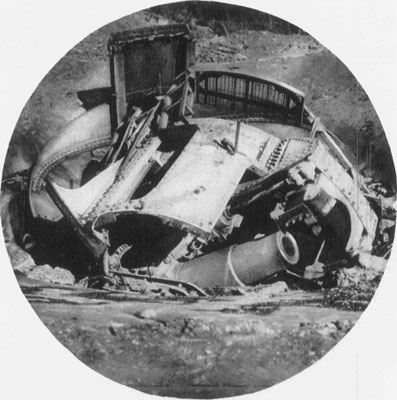
Japanese and 1500 British troops poured through the gap, fanning out and winning ground. As the Japanese advanced up Iltis Hill, an incredibly strange scene developed.
A Japanese captain, advancing up the hill, came face to face with a German lieutenant trying to rally his troops, with his sword drawn. The two men, as if to perform in a show, were lit up by a spotlight. A duel broke out, with the infantry from both sides staring in stunned amazement.
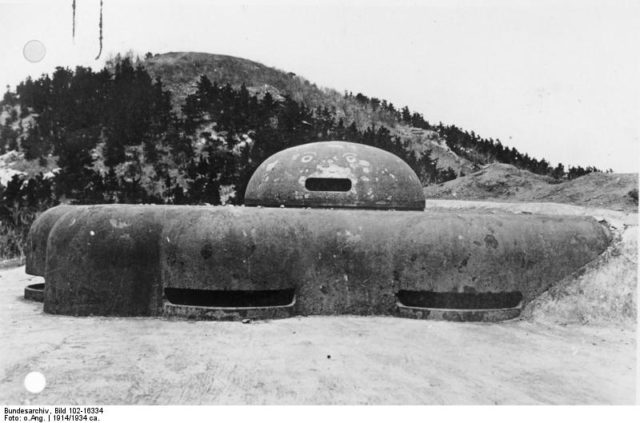
The Japanese gunto, a military version of the traditional samurai sword, outmatched the ceremonial saber of the German officer. Seeing their lieutenant cut down, the Germans retreated while the Japanese troops charged forward, bayonets fixed.
The Germans were forced to withdraw en masse. With their flanks exposed and their artillery out of ammunition, there was no hope. On the 7th, Alfred Meyer-Waldeck formally surrendered. In all, the body count favored the Germans with 199 killed to 727. All remaining troops were taken captive, and six ships had been scuttled in the harbor.
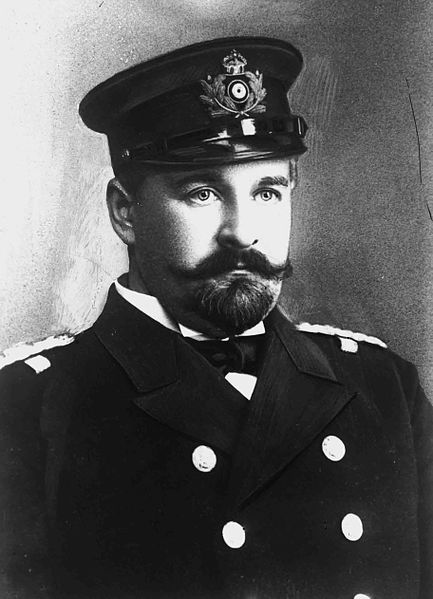
Tsingtao was a major sticking point for Japanese-Chinese relations over the following 20 years. The Japanese refused to give up the colony until 1922. It gave them experience in occupying the Chinese mainland, which lead to their invasion into China in the 1930s and 40s.
The battle was a microcosm of the war which followed. It combined aerial attacks and reconnaissance, heavy artillery bombardment giving cover to infantry advancements, and desperate fighting in the resulting rubble.
WWI was a different fighting experience, and Tsingtao provided the world with a glimpse of what was to come.
